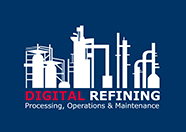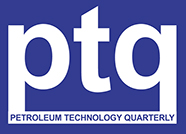James Esteban - Refined Technology Inc.
Jordan Gronkowski - Orange Ultrasonics Inc.
Martha Smith - Zymeflow Technologies
Zach Stewart - Delta Tech Inc.
Jose Manuel Linares - EnvTech
 Post Workgroup Follow up
Post Workgroup Follow up
Sharing information is important at RefComm. To help facilitate this, RefComm uses the interactive app – SLIDO – during the session. Audience members can post questions to be addressed by the panelists or MCs. Because of the high volume of discussion during this session, not all questions were addresses at that time. Below are a few questions and answers recently addressed by the panelists.
Can ultrasonic technology (Clean-in-Process) be used on Coker Fire Heater tubes to remove salt deposits?
Ultrasonic Clean-in-Process technology continuously disrupts the ability of salt fouling deposits to stick to tube surfaces. This technology is suitable for Coker fractionator bottoms exchangers and steam reboilers, as well as in some Coker preheaters. The high-frequency, low-displacement nature of the ultrasound mitigates both salt scaling and coke fines from depositing on ID and OD sides of tubes. Process candidates for the Ultrasonic Clean-in-Process technology are based on heat exchanger design, operating temperature, process viscosity, and other factors found at orangeultrasonics.com/morko-usp.
Can ultrasonic technology (Clean-in-Process) be used for all types of Exchangers?
This technology has most experience in shell and tube designs and welded plate and frame. This is because there is a sufficient welded connection between where the technology is mounted (externally), and where the fouling occurs in the exchanger. Each candidate is assessed through the use of a candidate form.
——————————————————————————————————
Here’s how this Workgroup works.
- Each panelist introduces themselves. Name, Company, What you do: chemical cleaning, ultrasonic, etc. – 7 Seconds.
- The first panelist focuses on one topic from the list below and shares their expertise You may use slides or not. – 10 minutes.
- The audience asks questions. You and other panelists answer.
- Repeat step 2 and 3 for each panelist.
- After all panelists have addressed their questions, the moderator ask for any questions not already covered.
This session will have 3 to 5 panelists and will run for approximately 90 minutes. The audience will include Delayed Coking, CatCracking and Sulfur Units.
Topics of Discussion
- What is the onsite preparation and setup time for the chemical cleaner? How long does the cleaning take, how long will a vessel be out of service?
- General cost for chemical cleaning a vessel. What makes a price be higher or lower.
- Are there chemicals or processes which give better results?
- Does the expertise of the equipment operator make much difference?
- Can you clean a vessel or exchanger on the run? How do you verify cleanliness?
- What about missing the opportunity for visual inspection of equipment?
- How do you know when the vessel is safe for entry.
- How do you coordinate all the space required for pumping and draining, while not impeding other TA setup. Do you require forklift, crane, etc
- What should refinery operations do before the cleaning?
- What’s your policy to ensure it is de-inventoried before the cleaning?
- When equipment is not cleaned well enough, what do you do?
- How long does equipment stay clean before you have to clean it again.
- What can operations do after the cleaning to keep it clean?
- How does cleaning affect the life of the equipment?
Can you join in and share your knowledge?
If you or a colleague would like to participate as a panelist, please send Becky your first and second choice of topics from the list above.



















